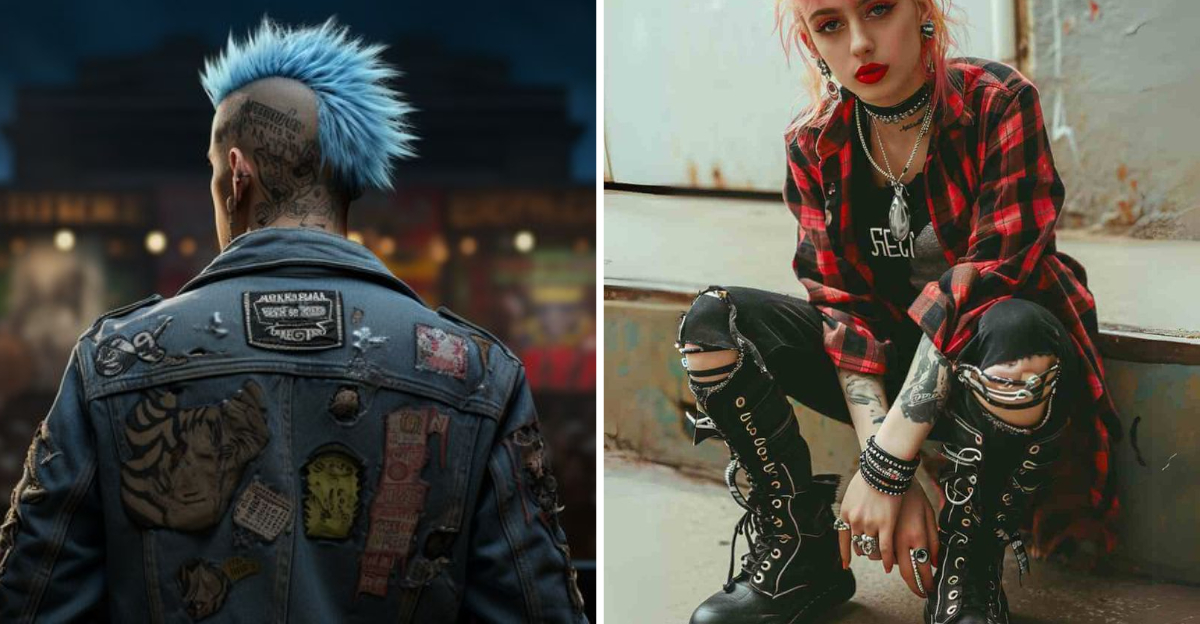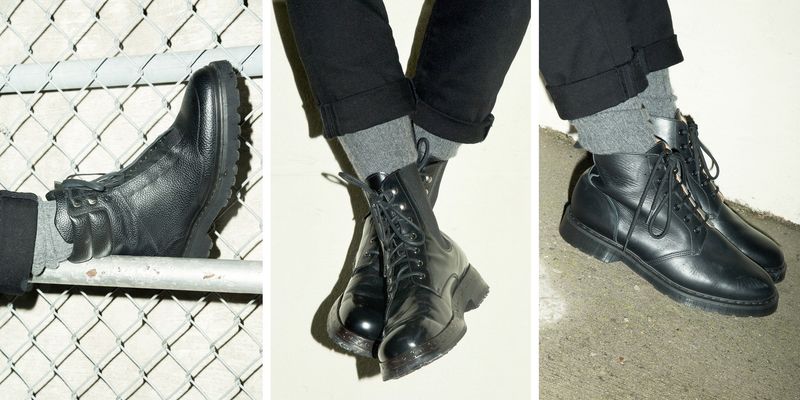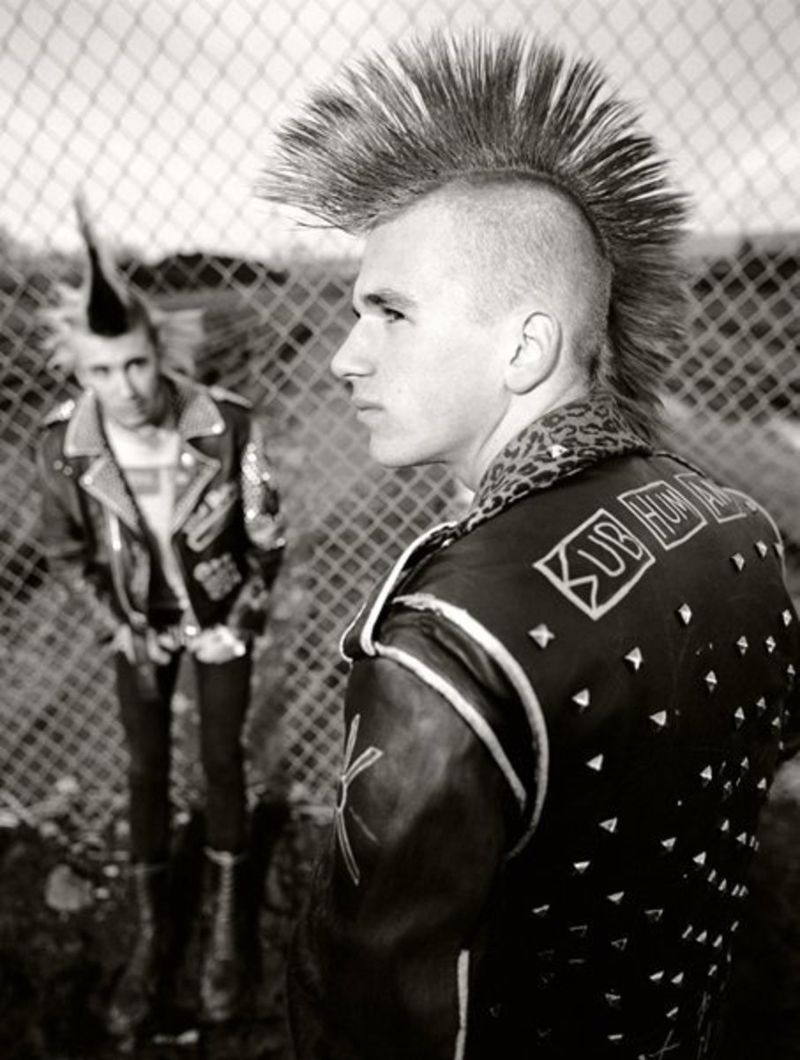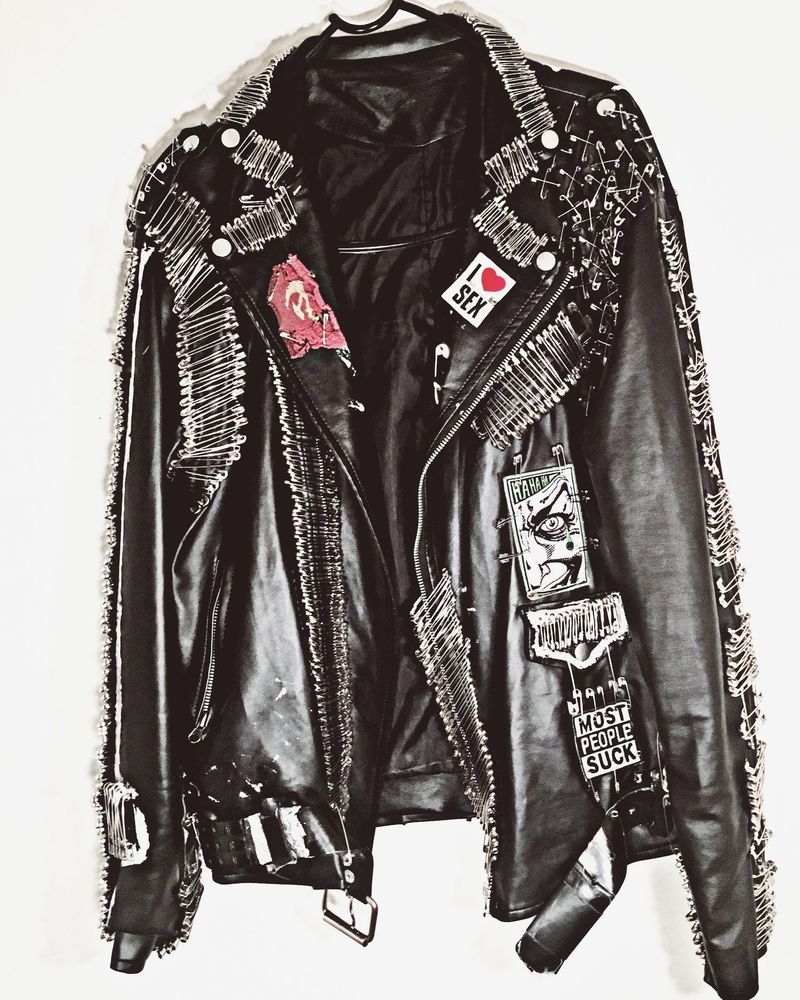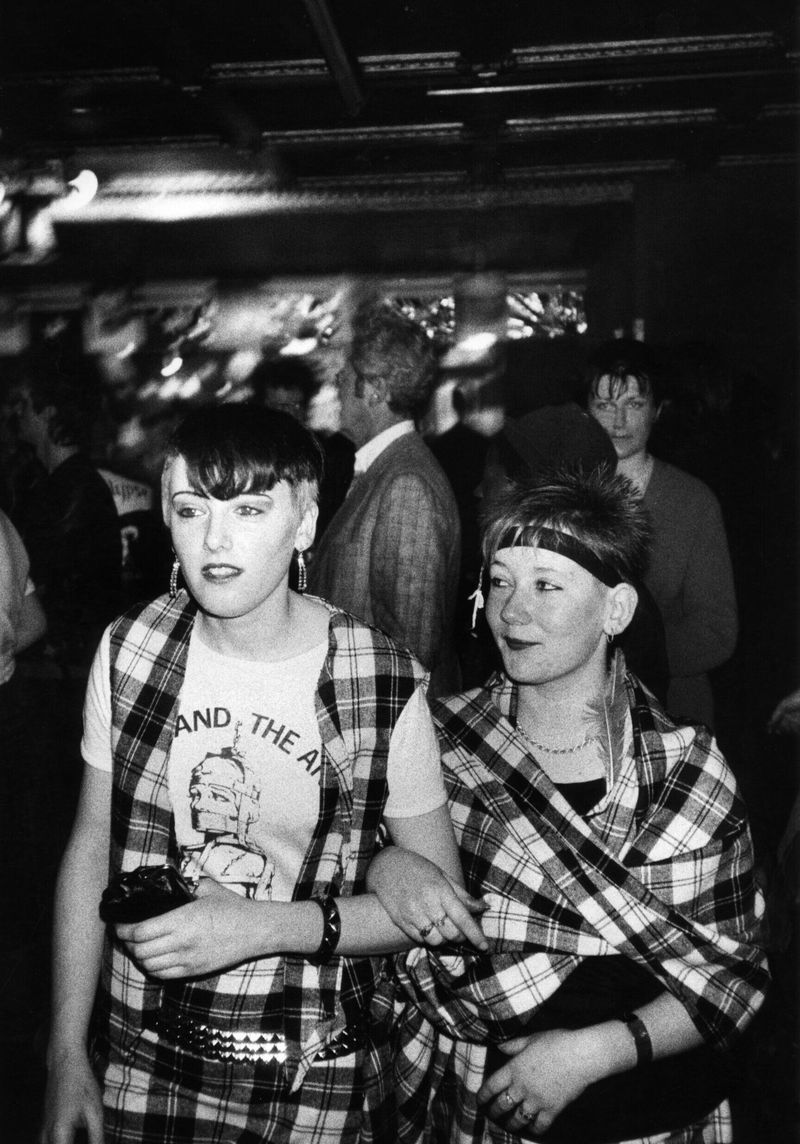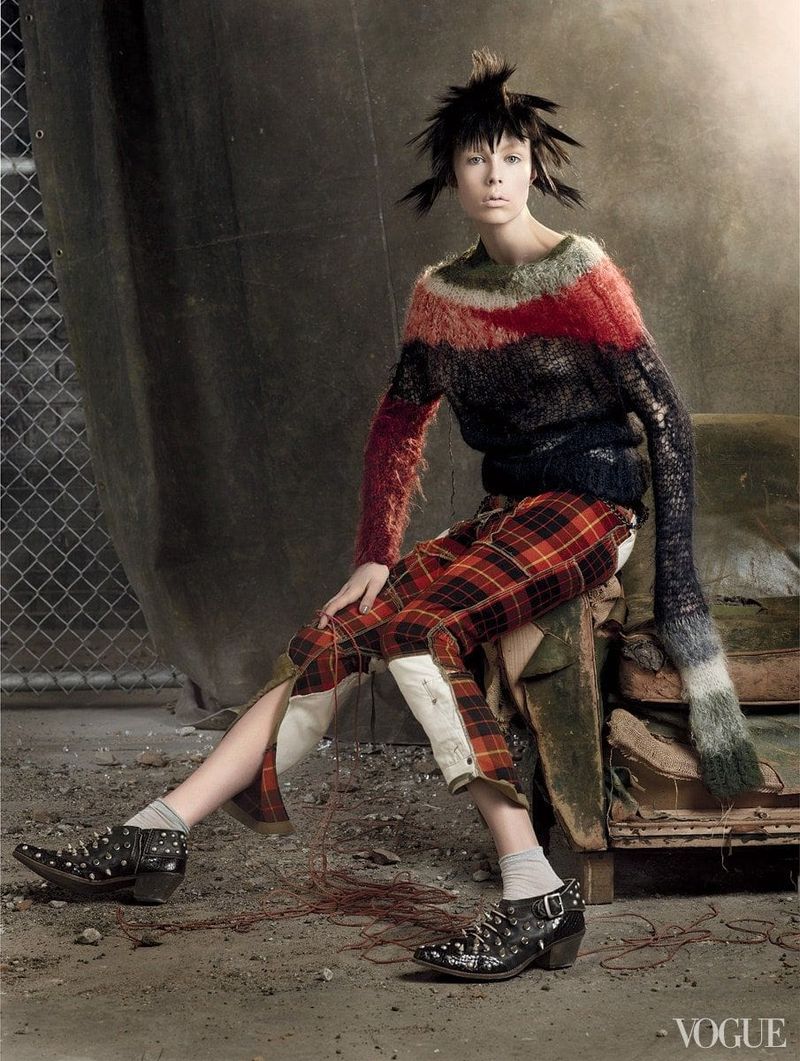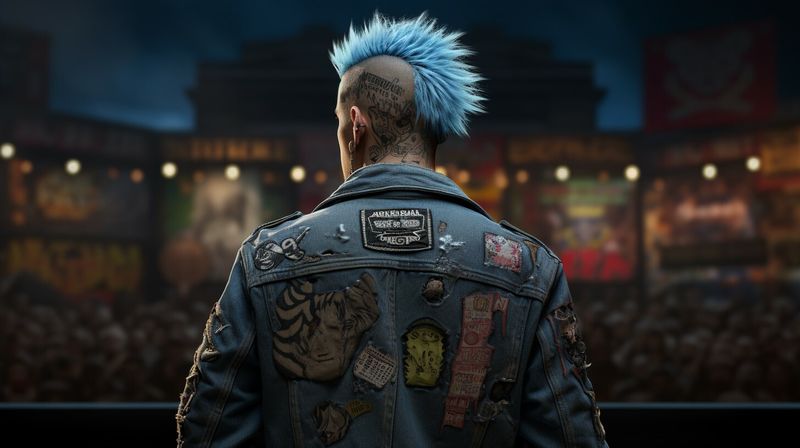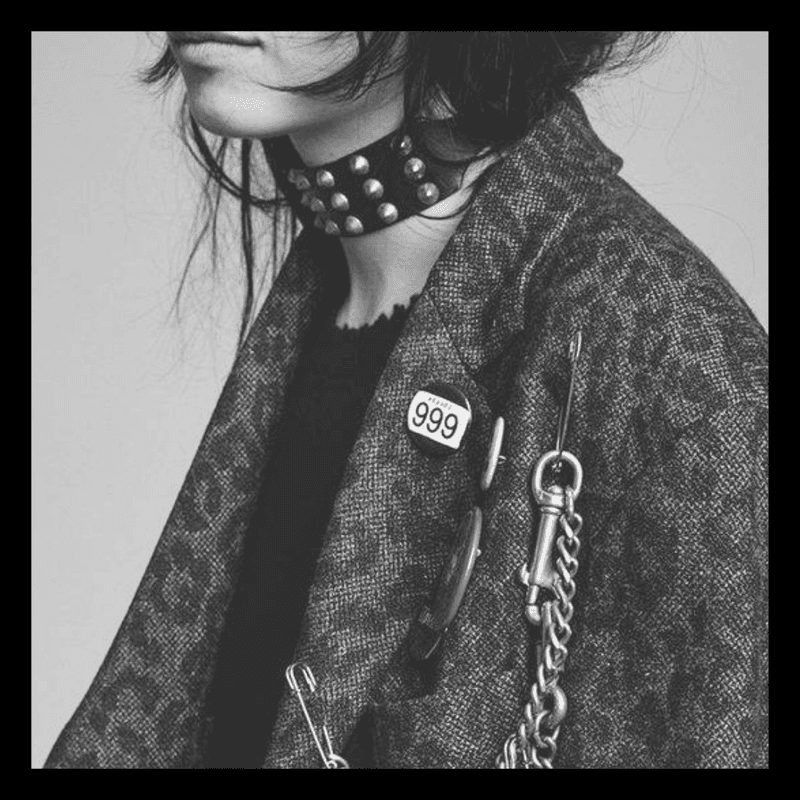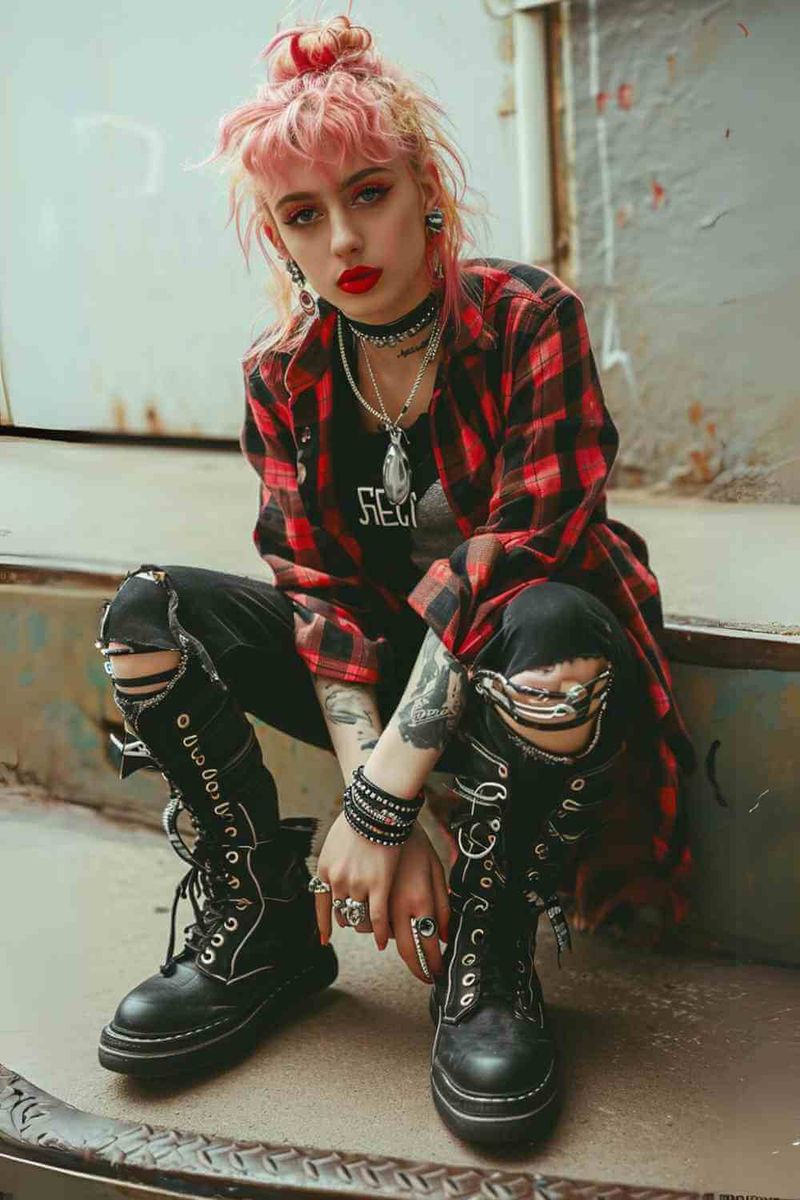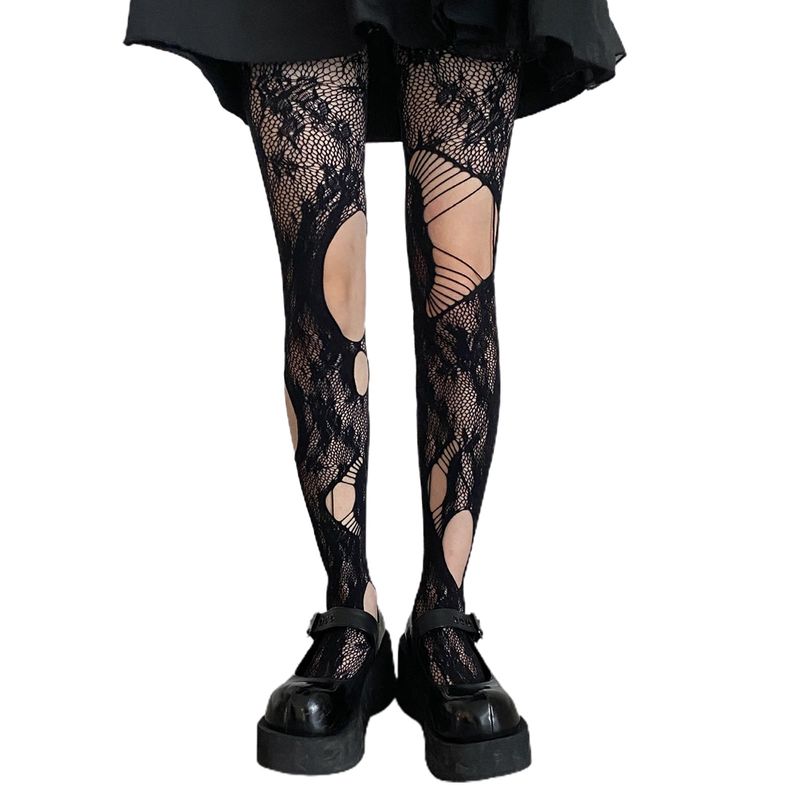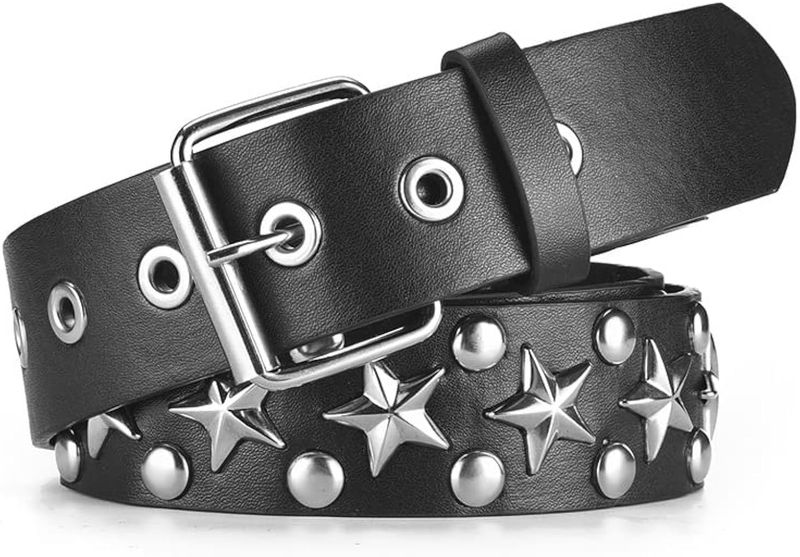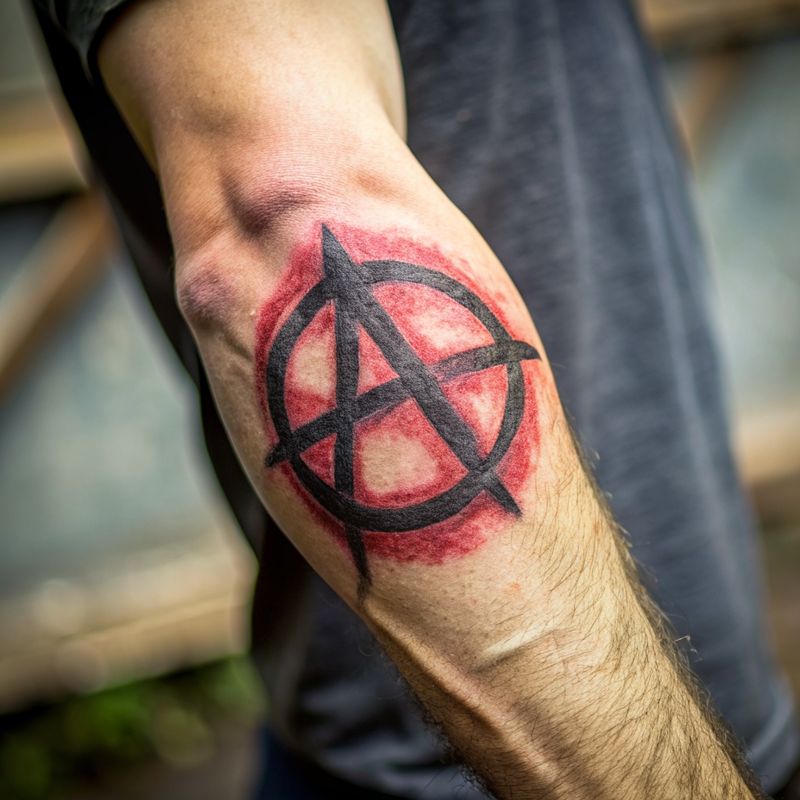The 1980s marked a pivotal era for punk fashion—a movement that reshaped style, culture, and individuality. Emerging as a rebellious statement against mainstream norms, punk fashion introduced bold colors, DIY aesthetics, and eclectic styles. This blog post delves into the key elements that defined the punk fashion revolution in 1980, offering an insight into the garments, accessories, and attitudes that made punk an enduring cultural phenomenon.
Leather Jackets
Leather jackets became synonymous with punk fashion in the 1980s, symbolizing rebellion and toughness. Often adorned with band patches and metallic studs, these jackets were more than just clothing; they were a canvas for self-expression. The rugged aesthetic, combined with DIY embellishments, made each jacket unique. Worn by punks across the globe, leather jackets were versatile, pairing effortlessly with ripped jeans or plaid skirts. These iconic pieces provided a protective shell against societal norms, encouraging wearers to showcase their individuality. The allure of the leather jacket remains timeless, a testament to its enduring punk legacy.
Doc Martens Boots
Doc Martens boots were a staple in punk wardrobes, representing durability and a defiant spirit. Introduced in the 1980s, these boots were prized for their comfort and distinctive style. Punks often customized them with paint, pins, and laces to reflect their personal style. The tough, utilitarian design made them ideal for concerts and protests. Paired with fishnet stockings or denim, Doc Martens added edge to any outfit. Over the years, these boots have transcended their subcultural roots, remaining popular across various fashion scenes. Their iconic status is a tribute to punk’s lasting impact.
Mohawk Hairstyles
The mohawk hairstyle epitomized punk fashion’s daring and nonconformity. Known for its dramatic, spiked appearance, the mohawk was often dyed in vivid colors. Adopting this hairstyle was a bold declaration of individuality, defying societal beauty standards. Creating a mohawk required commitment, with regular maintenance to keep the spikes sharp and the colors vibrant. Beyond aesthetics, the mohawk signified a rebellion against conventional norms, a visual representation of punk ethos. This hairstyle became an enduring symbol of the movement, capturing the essence of punk’s fearless attitude. Mohawks continue to inspire those seeking alternative expressions.
Safety Pins
Safety pins emerged as one of punk fashion’s most versatile accessories, transforming from mundane objects to symbols of defiance. Used to hold clothes together or worn as jewelry, they signified a DIY approach to fashion. Safety pins were often seen on jackets, trousers, and even as earrings. Their presence in punk attire was both practical and rebellious, challenging traditional fashion norms. By incorporating safety pins, punks embraced imperfections and frugality, rejecting consumerism. This simple yet powerful accessory highlighted the resourcefulness and creativity inherent in punk style, leaving a lasting mark on fashion history.
Band T-Shirts
Band T-shirts became iconic within punk fashion, allowing fans to showcase their musical affiliations. Often depicting logos and album art, these shirts were wearable tributes to punk bands. In the 1980s, they became a staple for expressing musical identity and solidarity within the punk community. Fans would customize shirts with patches or rips, adding personal touches. This practice not only displayed loyalty to bands but also aligned with the DIY ethos of punk culture. Band T-shirts remain a timeless way to connect with music, embodying the spirit of the punk revolution and its emphasis on individuality.
Tartan Patterns
Tartan patterns found a bold new presence in punk fashion, symbolizing a clash with tradition. Originally associated with Scottish heritage, tartan was reimagined by punks to challenge societal norms. Worn as pants, skirts, or scarves, and often paired with leather and metal, tartan added a rebellious twist to outfits. This pattern conveyed a sense of defiance and nonconformity, aligning with the punk ideology. By adopting tartan, punks subverted its historical connotations, making it a statement of independence. The bold use of tartan in punk fashion demonstrated the movement’s creativity in redefining cultural symbols.
Denim and Patches
Denim, a timeless fabric, was revolutionized by punks through the addition of colorful patches. These patches often displayed band names, political slogans, or artistic designs, turning denim into a statement piece. The DIY approach of sewing or pinning patches onto jackets and jeans allowed punks to personalize their outfits. This customization reflected their beliefs and affiliations, making each piece unique. Denim with patches became a canvas for self-expression, representing resistance against mainstream fashion. This creative blend of fabric and symbolism continues to inspire artists and fashion enthusiasts, highlighting punk’s innovative spirit.
Chains and Studs
Chains and studs became defining elements of punk fashion, symbolizing strength and resistance. Often incorporated into belts, jackets, and jewelry, these embellishments added an edgy flair to outfits. The metallic gleam of chains and studs contrasted with fabrics, creating a striking visual appeal. For punks, these accessories were more than decorative; they represented a rebellious attitude and a challenge to authority. The clinking of chains and the sharpness of studs echoed the punk ethos of defiance and individuality. Today, these elements are celebrated for their bold aesthetic and continue to influence alternative fashion.
Ripped Clothing
Ripped clothing emerged as a hallmark of punk fashion, embodying its raw and unrefined ethos. This trend was born from a rejection of polished, conventional attire. Punks deliberately tore their clothes, creating an unfinished look that challenged fashion norms. Ripped items, from T-shirts to jeans, symbolized rebellion against consumerism and societal expectations. This aesthetic choice emphasized authenticity and imperfection, aligning with punk’s anti-establishment beliefs. The artful disarray of ripped clothing continues to be embraced by fashion designers, captivating those drawn to its subversive charm and its celebration of individuality.
Fishnet Stockings
Fishnet stockings added a provocative edge to punk fashion, embodying a daring and bold style. Worn with skirts, shorts, or under ripped jeans, they were a versatile accessory. Fishnets challenged traditional fashion norms by juxtaposing delicacy with punk’s gritty aesthetic. Their open weave allowed for creative layering, often paired with colorful socks or tights for added flair. This accessory became synonymous with punk’s rebellious spirit, emphasizing both defiance and creativity. Fishnet stockings remain a popular choice for those seeking to infuse their wardrobe with punk-inspired edginess and a touch of boldness.
Studded Belts
Studded belts were a quintessential punk accessory, representing strength and style. These belts, covered in metal studs and spikes, added a rugged edge to outfits. Worn with jeans, skirts, or over dresses, they highlighted punk’s tough yet fashionable appeal. The tactile sensation of studs provided a unique texture, setting these belts apart from conventional ones. Studded belts became a symbol of rebellion, capturing punk’s commitment to nonconformity. Their enduring appeal lies in their ability to transform simple ensembles into bold statements. Today, they continue to inspire those drawn to punk’s fearless fashion.
Anarchy Symbols
The anarchy symbol became a powerful emblem within punk fashion, representing a rejection of authority and the embrace of chaos. Often seen on clothing, accessories, and graffiti, it conveyed the punk ethos of defiance and independence. Incorporating this symbol into fashion allowed punks to visually express their anti-establishment beliefs. Whether painted on jackets or worn as jewelry, the anarchy symbol was a statement of resistance. Its bold, simplistic design made it instantly recognizable, cementing its place in punk culture. Today, the anarchy symbol continues to inspire those challenging the status quo, maintaining its revolutionary spirit.
